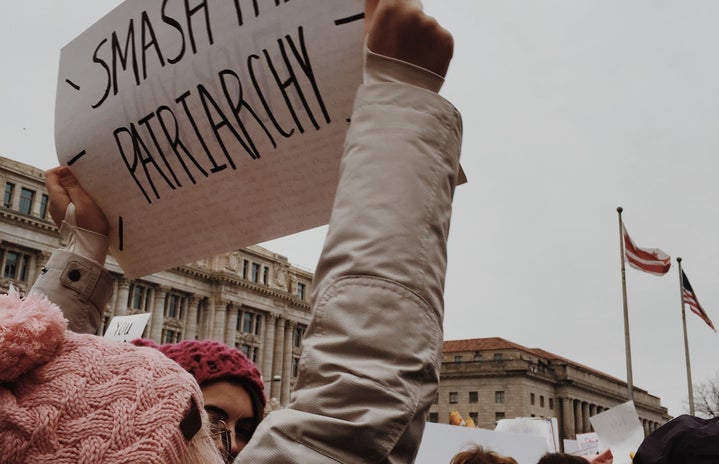Content warning: This article discusses the politics around r*pe, misogyny, and assault at length.
Disclaimer: This article explores violence done by cis-het men unto AFAB (Assigned Female at Birth) folk. While the rape of men is horrendous and a serious cause for concern, it is not within the focus of this article.
In 2012, when news of the Nirbhaya rape case began hitting TV screens on December 17th, a day after Nirbhaya was attacked, it sparked national outrage. By December 18th, enough pressure had been created by citizen protests that Ram Singh and three other accused were caught by the police. Within days, all six accused were under arrest, and in less than a year, four of the convicts were awarded the death penalty.
When the convicts were hanged on March 20th this year, the nation erupted into joyful celebrations. It was noted as a mass condemnation of assault and violence against womxn all over the country- but should India really be pretending that it’s above rape?
Five years after the Nirbhaya accused were awarded capital punishment, India ranked as number one on a list of the most unsafe countries for womxn among the 193 UN member states- ahead of war-torn Afghanistan and Syria. Although this ranking was controversial, it is undisputed that four years after the case (2016), a woman was raped every 13 minutes and six womxn were gang-raped every day. This data, of course, excludes the vast number of acts of sexual violence that go unreported or aren’t a crime at all, since marital rape is still legal in India.
So, if the vast majority of Indians, including Indian men, are against rape to the point of being repulsed by it, and rapes still occur in every stratum of society, in homes as well as in workplaces, – who is responsible for these rapes? In other words, if the vast majority of Indians side with the survivor, who and where are the criminals?
The issue is two-parter: the first being the ‘othering’ of a rapist. Picture this- you’re a boy of school-going age. You see your female classmates being punished for having skirts with hemlines that rest above their knees. The uniform codes for boys and girls are different- girls wear skirts or salwar-kameez, while boys wear shorts or pants. You like watching Bollywood movies. You see rape-accused men like Sajid Khan still flourishing in the Indian film industry. Movies like Kabir Singh, Pardes, Ranjhanaa, Andaz Apna Apna, etc. normalize stalking, emotional, physical, and sexual violence against womxn in your mind. Your parents, worried about your sister’s safety, police her curfews and clothing choices while leaving your life unrestricted, putting the onus of rape on womxn. When you begin to catcall womxn in the street late at night, you think it’s your right as a man and the woman’s fault for leaving home so late in the day.
In books and movies, you only see upper-caste, middle to upper class, heterosexual couples. You internalize hate for yourself when you realize you’re attracted to men, too. You’ve seen men in media kicking, punching and, fighting all the time, so you begin to project your frustration as aggressive behaviour.
Now, imagine that when you grow up, you rape someone, or carry out an acid attack, or slap your wife. You’re taken into police custody, your family disowns you, and society is disgusted by the likes of you. But, you don’t think you’ve done anything wrong. You’ve only acted out what was taught to you by the same society, which is now rejecting you. You were never taught to respect healthy boundaries, the lines of consent, or process your emotions in a non-aggressive manner. Our society shuns the rapist-and rightly so, but not the systems that produce those rapists. It celebrates cis-heteronormative patriarchy as “part of our culture” or “the Indian way”- womxn in the kitchen, and men in the workspace, but is disgusted by the products of its patriarchal structure. We still perpetuate rape culture by policing what womxn wear, what they look like, what they study, what time they come home, but we despise the men this rape culture produces. The second we hear about a rape, we are quick to demand that the rapist(s) be hanged, and then sit comfortably under the illusion that we have made a dent in the crime rate, or that we have caused any semblance of structural change.
Rapists do not climb out of sewers to ruin our society. They are people like you and I, who lack accountability in our socio-political structures. The BJP government, under whose rule Nirbhaya’s rapists were hanged, the party that has been rallying for justice for Nirbhaya for years now, has the highest MPs and MLAs with cases of crimes against womxn. The best of the lot- Yogi Adityanath, welcomed the hanging of Nirbhaya’s convicts, while often making regressive statements about how the role of womxn should be restricted to the home, in humble service of and protection by their male family members. Yogi Adityanath is the same leader who sat silently on the stage when his supporter gave an open call to drag dead Muslim womxn out of their graves and rape them. Despite these remarks, he enjoys massive public support. Our society lives for pointing fingers, without ever reflecting on the role it has played in the perpetuation of rape culture; always treating the symptoms and never the cause.
The second part of the issue is the lack of desire of the Indian public to prosecute men from privileged strata of society and the lack of demand for judicial reform. Research shows that the death penalty does not deter crime, and instead incentivizes rapists to murder their victims so that the rape cannot be reported. It also leads to a drop in reporting rates since womxn are often raped by someone known to them, thus causing hesitancy in sending someone in their social circle to the gallows. The frequency of punishment is far more of a deterrent than the severity of punishment. However, the Indian public wants to absolve itself of all responsibility for rape and rape culture, and demand that rapists be hanged. This leads to politicians and the ruling party having a lack of accountability in terms of long-term criminal justice reform- “If the public doesn’t want reform, why should we be bothered?”
Research also shows that three-quarters of death row prisoners are from lower-castes or religious minorities. Hence, who we punish and who we let go perpetuates already glaring inequalities in our society. This is witnessed by the politician after politician and, CEO after CEO that goes unpunished. We only want to punish those who conveniently fit into our idea of rapists, being the outliers in society. We ridicule womxn who report harassment, and pity men whose “careers will be ruined” due to the allegations. We don’t question the men around us who harass their spouses or co-workers and if we do, we’re polite about it.
Whether we like it or not, through the actors we support, the movies we don’t question, the predatory music we let pass, the politicians we vote for, we create these men. We create a society that condemns rape only once in a million years, only if all the stars align. We demand the death penalty to satisfy our bloodlust and maintain our illusion ki sab changa si.


